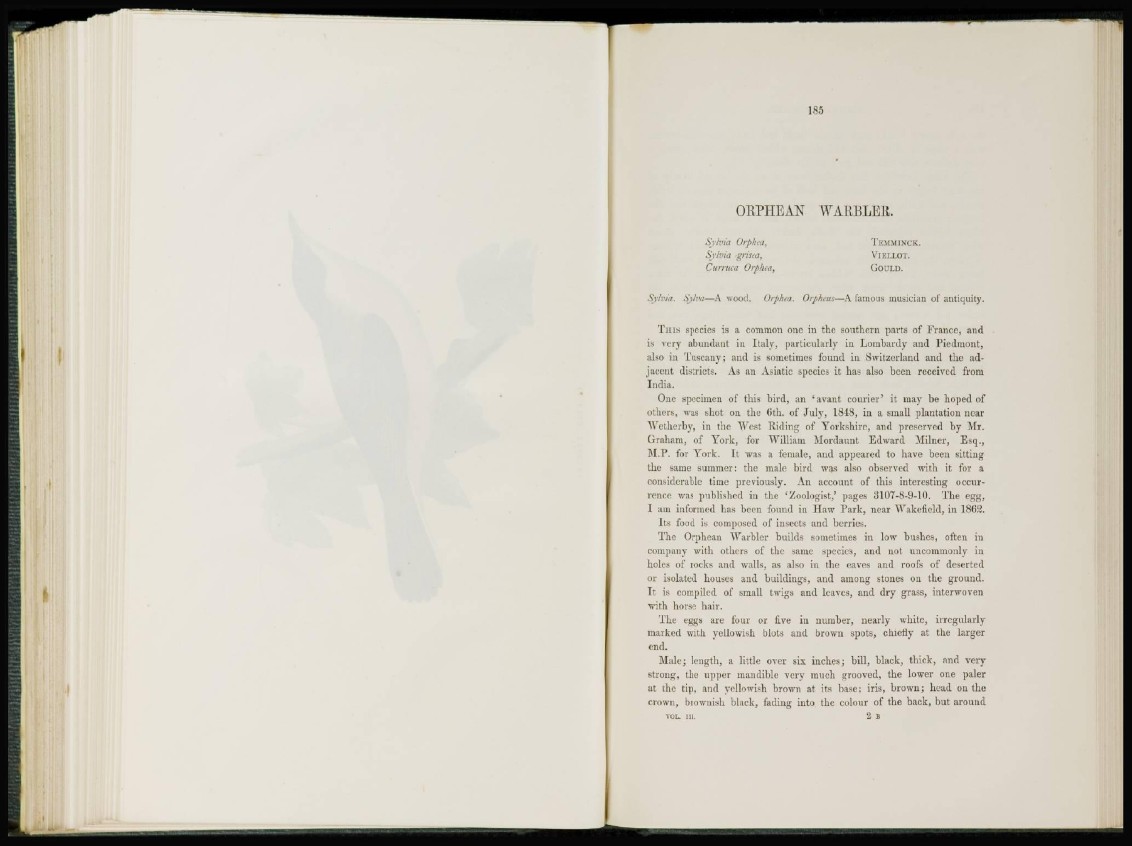
I
ORPHEAN WARBLER.
Sylvia Orphea, TEMMINCK.
Sylvia grisea, VIELLOT.
Curruca Orphea, GOULD.
Sylvia. Sylva—A wood. Orphea. Orpheus—A famous musician of antiquity.
T H I S species is a common one in the southern parts of France, and
is very abundant in Italy, particularly in Lombardy and Piedmont,
also in Tuscany; and is sometimes found in Switzerland and the adjacent
districts. As an Asiatic species it has also been received from
India.
One specimen of this bird, an 'avant courier' it may be hoped of
others, was shot on the 6th. of July, 1848, in a small plantation near
Wetherby, in the West Riding of Yorkshire, and preserved by Mr.
Graham, of York, for William Mordaunt Edward Milner, Esq.,
M.P. for York. It was a female, and appeared to have been sitting
the same summer: the male bird was also observed with it for a
considerable time previously. An account of this interesting occurrence
was published in the 'Zoologist,' pages 3107-8-9-10. The egg,
I am informed has been found in Haw Park, near Wakefield, in 1862.
Its food is composed of insects and berries.
The Orphean Warbler builds sometimes in low bushes, often in
company with others of the same species, and not uncommonly in
holes of rocks and walls, as also in the eaves and roofs of deserted
or isolated houses and buildings, and among stones on the ground.
I t is compiled of small twigs and leaves, and dry grass, interwoven
with horse hair.
The eggs are four or five in number, nearly white, irregularlymarked
with yellowish blots and brown spots, chiefly at the larger
end.
Male; length, a little over six inches; bill, black, thick, and very
strong, the upper mandible very much grooved, the lower one paler
at the tip, and yellowish brown at its base; iris, brown; head on the
crown, brownish black, fading into the colour of the back, but around
vol. in. 2 B